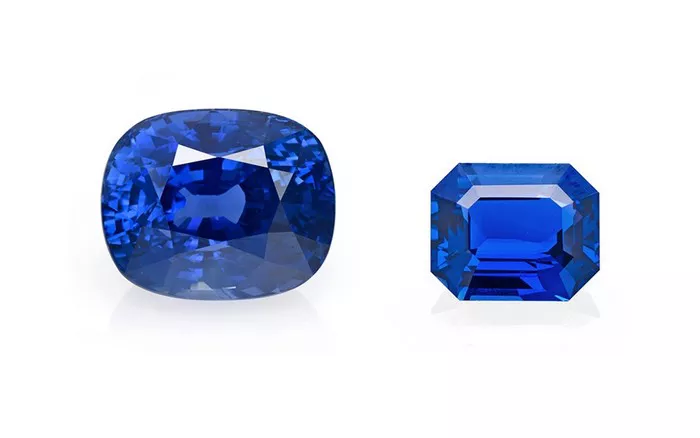Yellow sapphires, with their warm hues and elegant charm, have always been favored by jewelry enthusiasts. Among the numerous yellow sapphire suppliers, Blue Nile stands out as a global leader in online diamond and jewelry retail. This article will delve into the market demand and price trends of Blue Nile yellow sapphires, providing a detailed and accessible introduction for jewelry enthusiasts and investors.
Overview of Blue Nile
Blue Nile, founded in 1999 by Mark Vadon, is headquartered in Seattle, Washington, USA. It has quickly grown into the world’s largest online diamond and jewelry retailer, with a sales network spanning over 40 countries and regions. Blue Nile offers a wide range of products, including diamonds, gemstones, engagement rings, wedding rings, and customized jewelry. Its online platform provides consumers with a convenient and efficient shopping experience, allowing them to select and purchase high-quality jewelry from the comfort of their homes.
Blue Nile’s success can be attributed to its innovative business model and commitment to providing high-quality, cost-effective jewelry. By bypassing traditional retail channels and working directly with diamond manufacturers and wholesalers, Blue Nile is able to offer significant price advantages to consumers. This, combined with its excellent customer service and comprehensive after-sales support, has made Blue Nile a popular choice for many jewelry buyers.
Market Demand for Yellow Sapphires
Yellow sapphires are a type of corundum, which is the second hardest natural mineral after diamonds. They are valued for their vibrant colors, durability, and rarity. Over the past few years, yellow sapphires have gained increasing popularity in the jewelry market, driven by several factors:
Rising Consumer Demand: With the continuous improvement of people’s living standards, more and more consumers are willing to invest in high-quality jewelry as a symbol of status and taste. Yellow sapphires, with their unique colors and elegance, have become a favorite among many consumers.
Diversification of Jewelry Designs: Jewelry designers have continuously innovated and introduced new designs incorporating yellow sapphires. These unique designs have attracted the attention of many consumers, driving demand for yellow sapphires.
Investment Value: As a rare and precious gemstone, yellow sapphires have certain investment value. Many investors choose to purchase yellow sapphires as a hedge against inflation and a means of asset appreciation.
Blue Nile, as a leading online jewelry retailer, has also benefited from this increasing demand for yellow sapphires. It offers a wide selection of yellow sapphire jewelry, catering to the diverse needs of consumers.
Price Trends of Blue Nile Yellow Sapphires
The price of Blue Nile yellow sapphires is influenced by multiple factors, including gemstone quality, market supply and demand, and economic conditions. Here is a detailed analysis of the price trends of Blue Nile yellow sapphires:
Gemstone Quality: The quality of a yellow sapphire is determined by its color, clarity, cut, and carat weight. High-quality yellow sapphires with vivid colors, high clarity, and excellent cuts tend to have higher prices. Conversely, lower-quality yellow sapphires with dull colors, inclusions, or poor cuts may have lower prices.
Market Supply and Demand: The supply and demand dynamics of the yellow sapphire market also affect prices. When demand exceeds supply, prices tend to rise. Conversely, when supply exceeds demand, prices may fall. Blue Nile, as a major player in the online jewelry market, closely monitors market trends and adjusts its inventory and pricing strategies accordingly.
Economic Conditions: Economic factors such as inflation, interest rates, and consumer confidence can also impact the price of yellow sapphires. During periods of economic growth and prosperity, consumers tend to have more disposable income and are more willing to invest in high-quality jewelry. This can lead to an increase in demand for yellow sapphires and, consequently, an increase in prices. Conversely, during economic downturns, consumer spending may decrease, leading to a decrease in demand for yellow sapphires and a potential decrease in prices.
Over the past few years, the price of Blue Nile yellow sapphires has shown a steady upward trend. This is due to the increasing popularity of yellow sapphires, coupled with limited natural resources and mining restrictions. As a result, high-quality yellow sapphires are becoming increasingly scarce, driving prices up.
However, it should be noted that the jewelry market is subject to fluctuations and uncertainties. Prices can be affected by various factors, such as geopolitical events, economic policies, and changes in consumer preferences. Therefore, investors and consumers should remain cautious and conduct thorough research before making purchasing decisions.
Conclusion
In summary, Blue Nile yellow sapphires have shown strong market demand and price growth trends in recent years. Their unique colors, durability, and rarity have made them a popular choice among consumers and investors. With the continuous development of the jewelry market and increasing consumer demand for high-quality jewelry, the prospects for Blue Nile yellow sapphires remain promising.For consumers, purchasing Blue Nile yellow sapphires can be a way to add elegance and value to their jewelry collection. For investors, yellow sapphires can be a hedge against inflation and a means of asset appreciation. However, it is important to note that investing in gemstones involves risks and requires careful consideration of market trends, gemstone quality, and personal financial goals.
Related topic:
- Coral and Yellow Sapphire: What is the Difference in Quality Identification?
- Milky Yellow Sapphire: What is the Cause of Color?
- Jupiter Yellow Sapphire: Is It a Special Variety?


